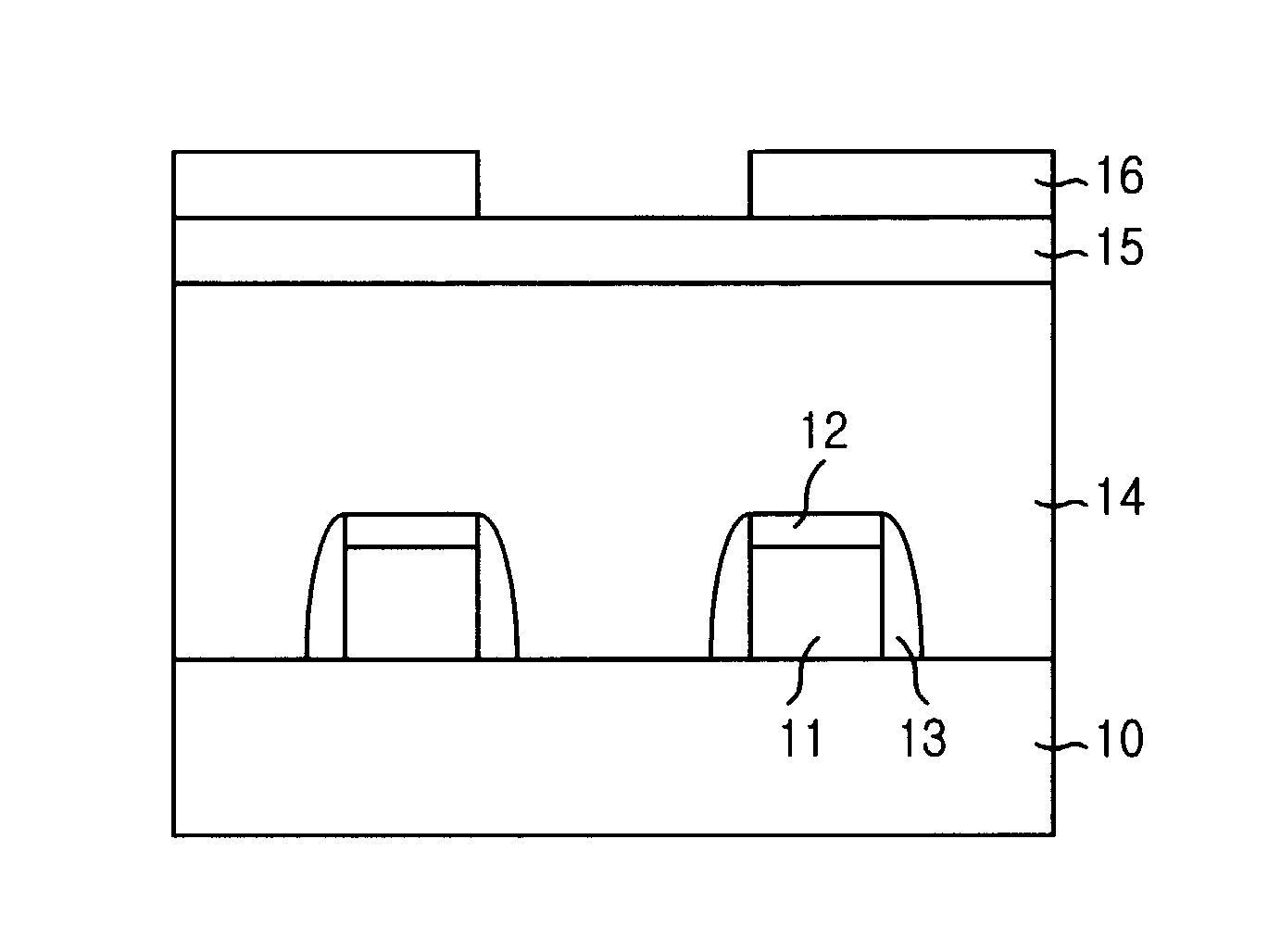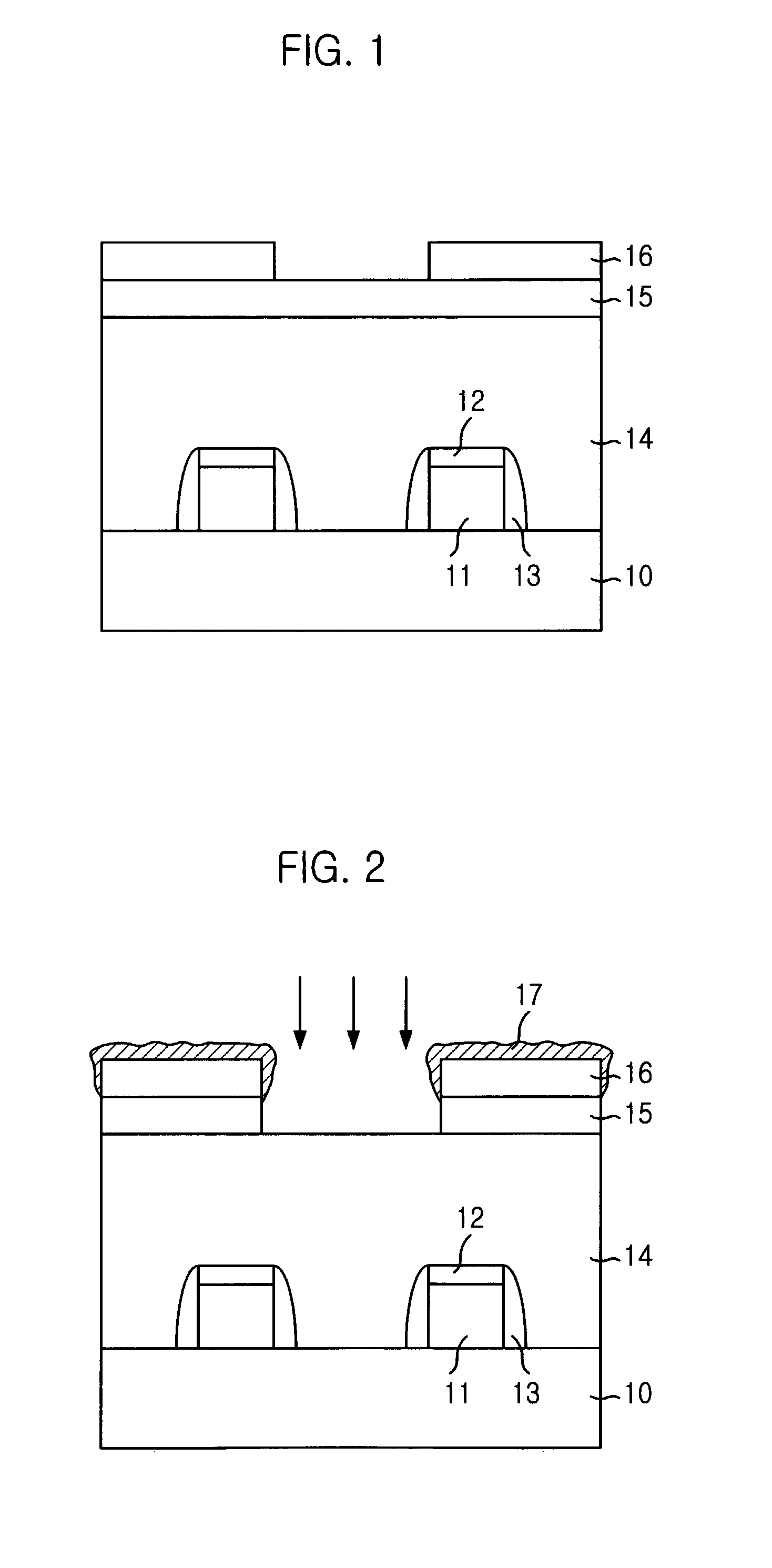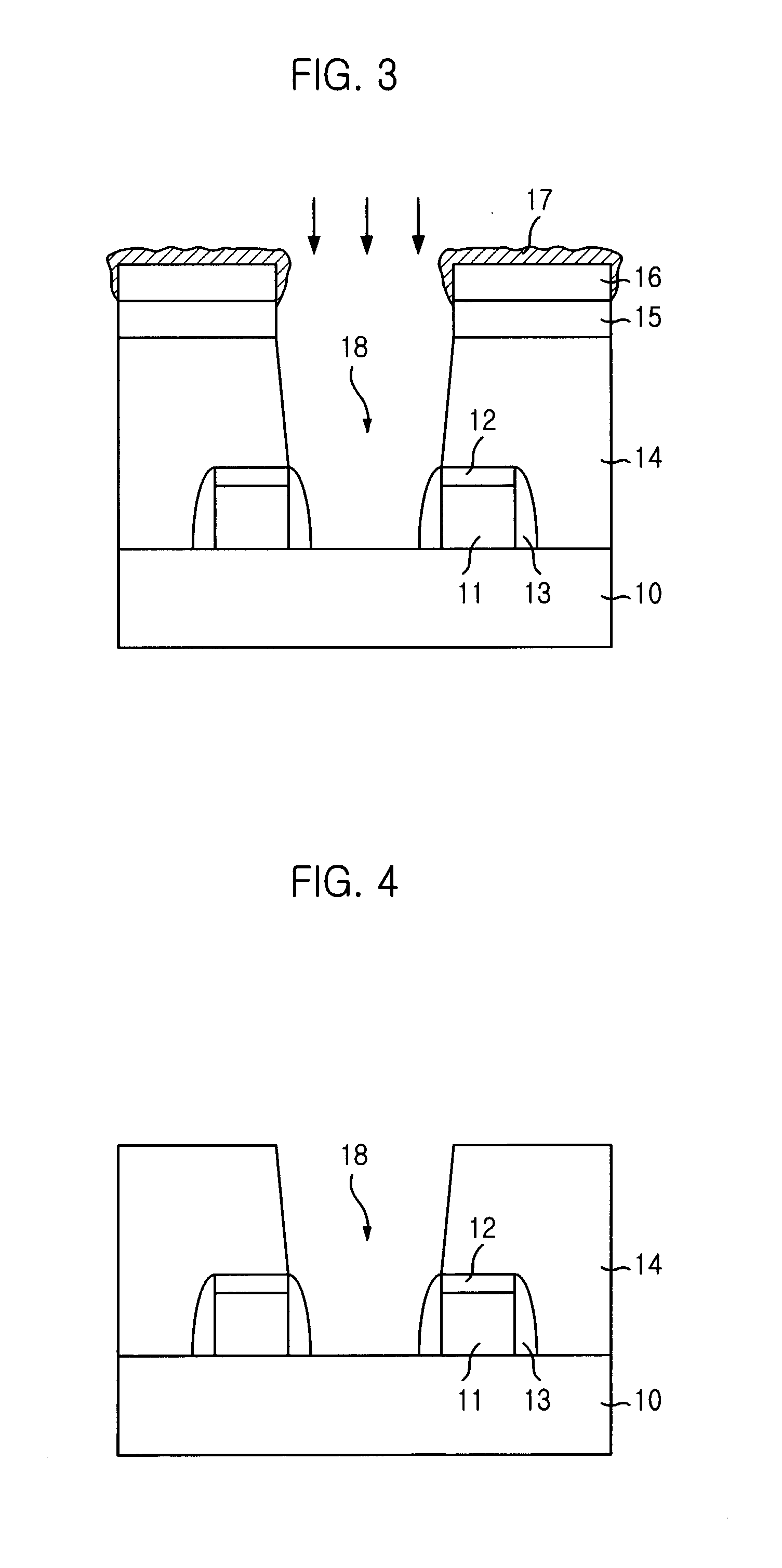Method for forming pattern using argon fluoride photolithography
a technology of argon fluoride and photolithography, which is applied in the field of forming patterns using argon fluoride photolithography, can solve the problems of difficult control of the process, difficult to obtain a pattern size less than 0.1 .mu.m, and difficult to improve the properties of the material
- Summary
- Abstract
- Description
- Claims
- Application Information
AI Technical Summary
Benefits of technology
Problems solved by technology
Method used
Image
Examples
Embodiment Construction
[0016] With reference to FIGS. 1 to 4, the preferred embodiment will be described in more detail.
[0017] Referring to FIG. 1, a number of conductive patterns such as gate electrodes 11 are formed on a substrate 10 including various constructional elements. Instead of the gate electrode 11, a bit line or a metal line having multi-layer structure can be formed.
[0018] That is, a gate oxide layer (not shown) is formed on an interface between the substrate 10 and the gate electrode 11. The gate electrode 11 is formed with stacked layers such as a polysilicon layer / a tungsten silicide layer, or a polysilicon layer / a tungsten layer. A hard mask 12 is formed with a nitride film on the gate electrode 11 for preventing losses of the gate electrode 11 due to a subsequent self align contact (hereinafter referred as to SAC) etching process.
[0019] Subsequently, an insulating layer for a spacer is deposited on a whole surface of the substrate 10 including the gate electrode 11 and the hard mask 12....
PUM
| Property | Measurement | Unit |
|---|---|---|
| Pressure | aaaaa | aaaaa |
| Pressure | aaaaa | aaaaa |
| Pressure | aaaaa | aaaaa |
Abstract
Description
Claims
Application Information
 Login to View More
Login to View More - R&D
- Intellectual Property
- Life Sciences
- Materials
- Tech Scout
- Unparalleled Data Quality
- Higher Quality Content
- 60% Fewer Hallucinations
Browse by: Latest US Patents, China's latest patents, Technical Efficacy Thesaurus, Application Domain, Technology Topic, Popular Technical Reports.
© 2025 PatSnap. All rights reserved.Legal|Privacy policy|Modern Slavery Act Transparency Statement|Sitemap|About US| Contact US: help@patsnap.com



